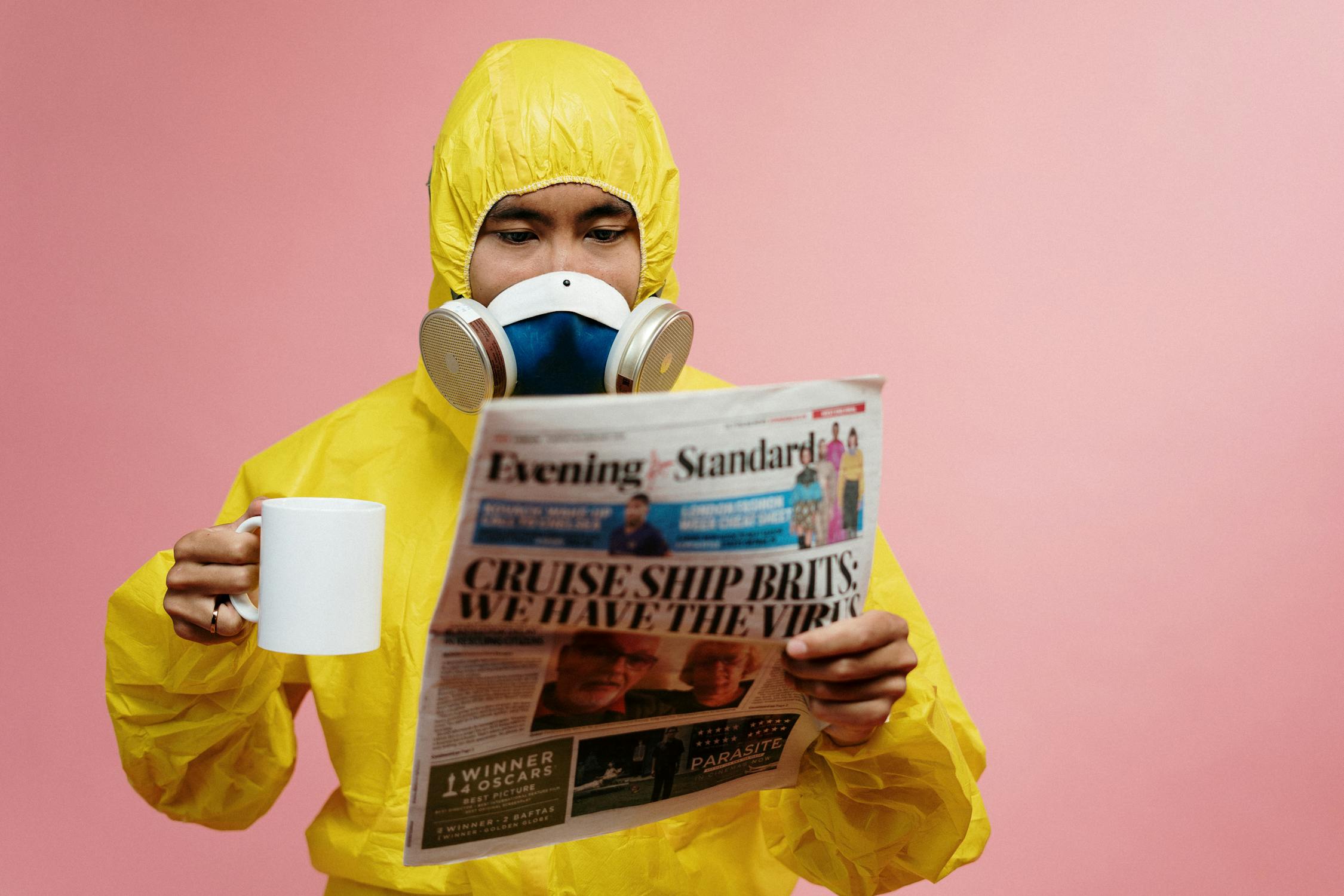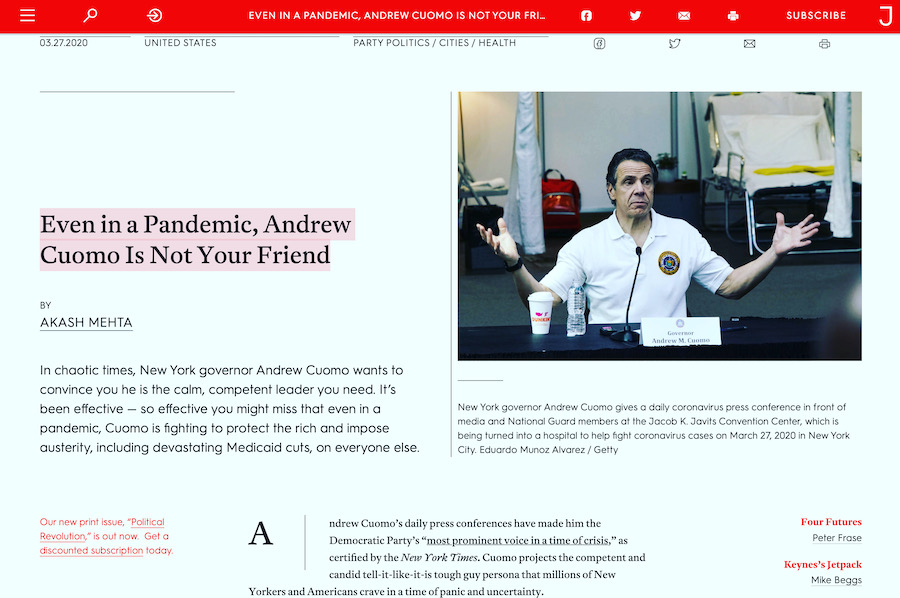
Viral. Virus. Two words that sum up our world in 2020. People in nearly every corner of the globe are dealing, either directly or indirectly, with the impact of the novel Coronavirus; and of course media outlets are reporting, analyzing, and pontificating with relish on the topic.
In the United States so many other news stories and current issues have been pushed to the side as COVID-19 takes center stage: the Democratic primaries, professional sports seasons (including the start of the baseball season), and more. News is primarily occupied with covering various aspects of COVID-19 and related topics: the disease itself, its transmission, the frightening statistics, the difficulties faced by medical personnel, the impact the virus is having on so many aspects of the economy, legislation being enacted to cope with the effects of the virus, and so on. In addition, the ongoing development of social distancing on such a wide scale has become the subject of many news stories: many presenting the situation in a matter-of-fact style, but others in mocking or even negative terms.
How are the multiple themes and interrelated topics of Coronavirus being presented to the general public? How do partisan beliefs shape the narrative? Is it possible to receive forthright and unbiased coverage?
The public is scared, frustrated, unsure of what will happen. The pandemic is not quite like other problems the world has faced in recent generations; and the media is tasked with explaining the disease and its spread, ways in which we can protect ourselves. Many desire for facts and depending upon moods, a want for unblemished truth and sobering reality checks, and some seek a bit more distance in the reporting so that it seems less overwhelming.

People also realize that politics and bias creep into media coverage of the disease and its impact on health, on jobs and businesses, on the economy and on government policies at the federal, state and municipal levels. We pick and choose our coverage, and many gravitate to sources and stories about Coronavirus that are aligned with adopted political views
Yet it is important to get news from more than one source, if you care about receiving a more comprehensive and complex picture. A discerning citizen should explore multiple perspectives, and be aware of how the COVID-19 narrative is being portrayed by different sources. Since many of us do have time on our hands, if we are practicing social distancing and staying at home, we can experience the news in more than one way. As your high school teachers would have commanded, compare and contrast.
We will divide the general news coverage into three major categories: mainstream coverage (primarily the major newspapers and TV networks), right-wing sources, and left-wing sources. There are gradations of each, to be sure, with niche, more extreme sources (primarily websites but also YouTube channels) that reflect voices more stridently conservative or liberal. These sources often, although not always, do reference government medical findings, as well as interviews with medical staff such as doctors, nurses, and EMTS who are on the front lines of tending to the sick.
Certainly in New York City and the tri-state area, (which includes New Jersey and Connecticut as well as suburbs of New York City) we are seeing, reading, and hearing coverage from medical personnel who are issuing dire warnings about the lack of adequate medical supplies including ventilators and swabs, test kits, and even beds. Some hospitals have been particularly hard hit such as Elmhurst in Queens, NYC. In addition, we are receiving graphic coverage about the problems faced by funeral homes overloaded with bodies.

It is important to explore multiple news sources to understand how the general news data can be manipulated. Everyone who is capable should be viewing and hearing (and digesting) the Coronavirus news and asking questions: is there a slant to this story, to the voices being awarded airtime? What can be extrapolated from this particular news story, from this presentation, from this essay or blogpost? Journalists and writers are well aware that not everyone is capable of analysis on deeper levels, or that many people just choose not to ask questions.
Coverage of the COVID-19 crisis is not limited to written sources; there is also radio, TV, and online videos. Social media is swamped with Coronavirus related and influenced material. Do you want serious articles? Darkly humorous memes and song parodies? Horrifying videos recorded by doctors, nurses, politicians, community leaders, recovering victims, beleaguered business owners? Twitter is a non-stop source of commentary on the illness, its spread, its impact on public policy and businesses; TikTok and YouTube are brimming with videos that post all kinds of opinions, viewpoints, emotions.
Media sources and pundits have to decide what to call this disease: COVID-19 and Coronavirus are two accepted names, but some are referring to it as the Chinese Virus or the Wuhan Virus. Certain sources are promoting outlandish theories about the virus origins and its spread: the issue has become politicized, turned into a weapon, turned into a source of hatred and prejudice. Politicians and opinion writers are at odds about how to contain the illness: while many stress the “stay at home” line, others are scoffing at this or ignoring it. Some writers and politicians are complaining about government restrictions, reacting to policies such as closing public spaces, schools, and houses of worship.
How are major newspapers and news networks covering the story? Let’s explore some outlets.

Washington Post: The Post’s homepage is a sober, comprehensive presentation of news stories. The March 30th issue featured stories such as “Federal and state officials caution that number of cases will continue to grow,” “FDA authorizes widespread use of unproven drugs to treat coronavirus, saying possible benefit outweighs risk,” “With hand sanitizer and elbow bumps, real estate agents are still selling during pandemic;” and articles that cover a wide scope of related stories. President Trump is fond of lashing out at the Post, but the tone here is largely “news and data.”
CNN, while initially a TV network, has also become a go-to news website. CNN’s homepage is a laundry list of pandemic topics: “‘We are slowly descending into chaos,’ Miami doctor says,” “Trump says 1 million have been tested in US for coronavirus,” “Ford to build 50,000 ventilators in 100 days,” “At this hospital, patient beds line the hallways and the morgue is overflowing.” To the point and without gloss, the coverage here is comprehensive.
The top headline on the Los Angeles Times website for March 30th was “Coronavirus hospitalizations have doubled in California over last three days,” top story on the Boston Globe front page was “11 residents dead at Soldiers’ Home in Holyoke; at least 5 had coronavirus,” a headline banner across the top of the Miami Herald front page read “Florida tops 7,500 coronavirus cases; 4 more deaths in Miami-Dade, Broward and Palm Beach,” and the New York Times print front page displayed an all-caps headline across six columns that read “AFTER A GRIM FORECAST, TRUMP EXTENDS LIMITS.”
Right-wing critics have touted the above mentioned newspapers as “liberal news,” but for most Americans, these are considered mainstream news outlets, and the standard for intelligent reporting, striking more or less neutral stances in their news reporting.
WCBS-AM 880 news, the New York City affiliate of CBS Radio News, has been covering the Coronavirus in what would be described as a neutral tone. The station’s top of the hour and special reports are major national and global coverage, with local (New York, New Jersey and Connecticut) emphasis filling up the hour.
What about Fox News? The front page of the website resembles those of mainstream sites mentioned above; but with shows such as “Fox and Friends,” and right-wing hosts Sean Hannity, Laura Ingraham, Tucker Carlson, among others, the majority of news and on-air personalities are rarely critical of President Trump and the Republican party line, and they have been largely supportive of the president’s statements and actions during this crisis.
Gothamist, which has had a reputation of being a somewhat humorous and liberal site focusing on culture and business in New York City, has become largely somber and is devoting most of its coverage to COVID-19 and related stories (homelessness and the virus, supply shortages, business responses, etc.)
Going beyond the Fox News coverage, the conservative tone can grow rather shrill. Hence we get coverage such as:
“Rick Wiles Says God Is Spreading the Coronavirus in Synagogues as Punishment for Opposing Jesus” (3/26/2020)

“COVID-19 Is Chinese Bio Warfare, Says Trump-Allied Megachurch Pastor Jack Hibbs” (3/26/2020)
“Radical right-wing broadcaster Josh Bernstein posted a video on his YouTube channel Monday in which he called for the 2020 election to be cancelled because of the COVID-19…declaring that the Democrats have no right to even challenge President Donald Trump.” (3/25/2020)
On Twitter, @RealJudgeMoore (Roy Moore of Alabama) tweeted at least 3 times to complain about churches being asked to close to avoid gatherings of people.
According to a Vice article from March 13, 2020 “InfoWars host Alex Jones, for example, has described the virus as a ‘bioweapon’ from China designed to destabilize the Trump administration– all while touting his ‘Superblue Fluoride-Free Toothpaste’ which he says can help prevent you from getting sick.”
Perhaps one of the most prominent public figures in the Coronavirus saga, aside from key politicians, is Dr. Anthony Fauci, the director of the National Institute of Allergy and Infectious Diseases (NIAID) since 1984, and as of January 2020, a leading member of the White House Coronavirus Task Force. Fauci has been warning Americans about the dangers of COVID-19, and has stressed the importance of social distancing, strident hygiene, and not rushing every worker back to his or her workplace, so as to contain the spread of the disease.
 While the mainstream press has accorded him much respect, some fringe sources have been critical of his statements and even his infamous “face palm” moment, when he showed quite disagreement with a statement made by President Trump. In fact, on Twitter, #FauciFraud has been trending, with statements both attacking and supporting Dr. Fauci:
While the mainstream press has accorded him much respect, some fringe sources have been critical of his statements and even his infamous “face palm” moment, when he showed quite disagreement with a statement made by President Trump. In fact, on Twitter, #FauciFraud has been trending, with statements both attacking and supporting Dr. Fauci:
Adam Schatzker writes “Those posting “#FauciFraud” are ignorant and dangerous. Stop pointing at those trying their very best to save the USA from disaster and calling them frauds.” (@adampsc Mar28)
Chester Kaminski writes “What is this #FauciFraud bullshit? You people are delusional, get a grip.”
Drew Stile writes “#FauciFraud is one of the dumbest things I’ve seen on twitter, and I’ve seen some dumb things. Right now we need professionals like Fauci more than ever.” (@drewstile March 29)
Slothrop wrote “#PresidentPence and #FauciFraud looking to oust @realDonaldTrump” (@Slothrop March 28)
Jtd717 wrote “Fauci is a trump toad. Don’t be fooled #FauciFraud” (@Jtd717 March 26)
And how have fringe, right-wing commentary and news sites dealt with COVID-19 and the pandemic in general? Their coverage has been at odds with the “MSM (MainStream Media),” as seen here:
On 3/29/2020, American Thinker posted these articles
“The Wuhan Virus is Turning Into a Wimp” by William Noel
“Lent Comes Before Resurrection” by T.S. Weidler (a pastor who links the spread to lack of religious fervor)
“Coronavirus Apocalypse Now” by Fay Voshell, which mocked the panic
A blog piece titled “Once Again, Trump was right and the media were wrong”
The Epoch Times ran an editorial stating that “There has been controversy recently about what to call the virus that has unleashed a worldwide pandemic. .. The Epoch Times suggests a more accurate name is “the CCP Virus” (Chinese Communist Party) …” updated for 3/27/2020
On the homepage of Breitbart News Network, these were stories for 3/29/2020:
“Coronavirus Jailbreak: Eight Sex Offenders Freed In Cuomo’s New York”
“Corona Gossip: Rome Mayor Asks Citizens to Snitch on Quarantine Breakers”
“Trump Ignored Early Warnings”
On the homepage of WorldNetDaily were these stories on 3/29/2020:
“N.Y. imam: Allah may inflict coronavirus on Muslims who live with infidels”
“Chuck Norris warns of rebellion, martial law if America’s COVID strategy doesn’t change”
“Unhinged: Freshman Democrat yells on House floor before Coronavirus vote”
ON THE LEFT:
News sites on the left tend to be highly critical of President Trump, Republicans and pundits/religious leaders/commentators who align with his statements. But not all liberal and left-leaning sites take the same tack, nor do they focus on the same stories. Let’s look at a sampling of headlines from March 30:
Daily Kos: “As crisis continues, Trump tells state governors he ‘hasn’t heard anything about testing in weeks.’” Another headline was “McConnell tries to claim credit for coronavirus stimulus bill salvaged by Schumer.” Yet another was “Florida megachurch pastor arrested after holding packed services in spite of COVID-19 order.” The Daily Kos point of view has been to disagree with Trump, McConnell, and others who fall in line with Republican thinking.
Democracy Now! had these as their top stories: “We Need a Public Health New Deal: Neoliberal Austerity & Private Healthcare Worsened U.S. Pandemic.” and “Housing Not Shelters: Amid Pandemic, Homeless New Yorkers Demand Refuge in Vacant Apartments, Hotels.” and “Coronavirus Cases Mount in Prisons and Among Law Enforcement Workers.” While these are not the only top stories on this site, the point of view skewers even to the left of Daily Kos, with a focus on people who are among the poorest and most overlooked.

Jacobin had these on its front page: “Even in a Pandemic, Andrew Cuomo is Not Your Friend,” and “We Can’t Return to Capitalism As Usual After This Crisis.” “Nationalize Amazon”: Instead of letting Amazon use coronavirus to dominate even more of the economy, the company should be nationalized and reoriented to serve the public good instead of predatory capitalism,” was another article title.
There are so many voices and sources on the Coronavirus pandemic, and while many do find common ground, especially amongst the mainstream news sites, the extremes do present more outrageous and less credible, or more partisan stories and viewpoints. On the far right you have more religiously influenced opinions (especially Evangelical and some Catholic takes) while on the far left you have more coverage that incorporates scathing criticism of capitalism.
Is everyone their own personal expert? Not necessarily so, but as you examine more extreme sites and stories, you will find more bizarre coverage.
For a personal response to the media scene overall, we spoke with Joe Strupp, a longtime media reporter currently with the Asbury Park Press (NJ), an adjunct professor at Rutgers University and Fairleigh Dickinson University, and author of the book “Killing Journalism.”
Is there general hysteria in the media, regarding COVID-19?
“Not a general hysteria. With some sites and networks such as CNN and MSNBC, it’s constant updates, charts, more death, more infection. This is what gets the audience. This is what gets eyeballs. People get nervous, and people watch the news. As far as the New York area, most of the local news has been balanced. You do see stories about neighbors helping neighbors, people doing good things. In Monmouth County, a group of volunteers has been picking up groceries and medication for those in need, and that’s being covered. National cable news outlets focus on the easier stories that grab attention. But it’s okay, considering what we are dealing with.”
Has there been much misleading or misunderstood information circulated by the mainstream press?
“No, not in the mainstream. You must know your source. But there is so much we don’t know (about COVID-19). You do see that more on the right, as with Alex Jones and World Net Daily, for example.”
Strupp also points out that a problem for covering the story, especially with local news outlets, is “cutbacks” to news teams; where fewer reporters are tasked with covering a wider range of topics. “Manpower and womanpower is a problem” in covering all the angles and getting deeper, more critical coverage. Overall, Strupp suggests that readers and viewers look at the sources, read critically, and be careful about how Coronavirus news is consumed.
Another issue with which media sources are grappling is the “precise” number of deaths due to COVID-19. Is there an under-count or over-count? There are many who share right-wing conspiracy threads, of inflated data on death counts. This is an ongoing and evolving subtopic within the greater Coronavirus story, and it reflects on the overall fear of the spread of the disease, as well as fear of government mismanagement and distrust by some people of media reporting on the hard numbers of casualties.
Coronavirus will be occupying our thoughts for quite a while. The medical and scientific aspects, the economic and financial effects, the sad personal stories of death and illness, the heroic stories of medical personnel and volunteers: all this and much more will be hard to avoid. But we have to view the news stories wisely. It is incumbent upon us to take this seriously and learn from it as well.
Dedicated to the memory of Professor William Helmreich, author of over a dozen books and who taught in the CUNY (City University of New York) system. William Helmreich died due to complications of Coronavirus.
– Ellen Levitt


Leave a Reply